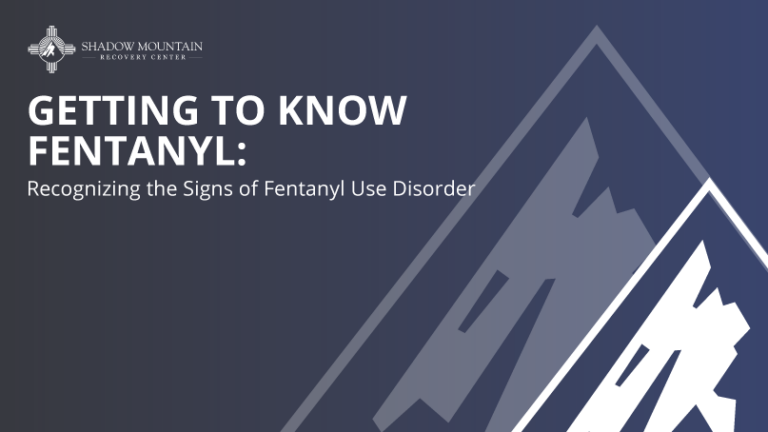Fentanyl Withdrawals
The average person may not be as familiar with the drug fentanyl as they are heroin or morphine, but fentanyl is much more potent than either. The drug was developed as a way to reduce the pain of terminally ill cancer patients, and it reduces pain by targeting receptors in the brain and spinal cord. A recent story from Las Cruces Sun News reports that Fentanyl overdoses in New Mexico are on the rise. With the rise in frequency of this drug being used, the need for information about this drug has never been more vital.
Fentanyl Withdrawal Timeline
Fentanyl withdrawal is not as simple as many might believe it to be. The withdrawal symptoms are often severe enough to prove fatal to a person as they seek out recovery. Detox from fentanyl should be overseen by a robust support system so that a person in recovery can be safe and comfortable as their body learns to live without fentanyl.
When someone stops using fentanyl, they typically start to experience mild withdrawal symptoms from 8-30 hours after the last time they used fentanyl. Symptoms will worsen between 36 and 72 hours. For most people, the physical symptoms of fentanyl withdrawal will end between 5 and 8 days, however it is possible for some symptoms to persist for weeks or even months after the last time a person used fentanyl. The good news is that, with the proper supports recovery from fentanyl use is possible! It is critical that a person seeking recovery surround themselves with a team of trained professionals who are equipped to support a patient in recovery.
What Factors Affect the Timeline
A few different factors can affect the withdrawal timeline when a person decides to detox from fentanyl. A person’s age, weight, and overall health can contribute to the timeline of fentanyl withdrawal. Another factor is how long the person has been using fentanyl. If a person has been using fentanyl for an extended period of time, it is likely necessary to more slowly taper off their use of the drug.
Likewise, if a person exhibits a higher rate of dependence, the amount of time it takes to work through the withdrawal timeline will increase. Co occurring disorders can play a role in the withdrawal timeline as well, especially if other medications need to be managed during the withdrawal process.
Finally, use of other substances can affect the length of time in which withdrawal takes place. For example, if someone is using alcohol and taking fentanyl the alcohol in a person’s system will increase the effects of the fentanyl and ultimately increase the timeline of withdrawal symptoms. Often fentanyl is added to heroin to increase its potency. Both substances are opioids and the presence of both can increase the effects of both and contribute to a longer withdrawal timeline. Finally, using methamphetamine and fentanyl can put strain on a person’s body due to the presence of two powerful substances that have many opposite effects. Instead of canceling each other out, this produces a variety of unpredictable results and will create a situation where a person will need to detox from both substances.
The Stages of Fentanyl Withdrawal
In the first stage of fentanyl withdrawal, taking place between 8 and 30 hours after last use, a person starts to develop mild symptoms. These symptoms often take the form of anxiety, discomfort, agitation, and muscle aches.
The worst symptoms start between 36 and 72 hours. During this time a person will experience vomiting, diarrhea, and muscle spasms as their body adjusts to the absence of fentanyl in the system.
After 72 hours, the worst of the symptoms will usually subside. The withdrawal process typically lasts for 5 to 8 days with some lingering symptoms sometimes ongoing for a period of weeks or months after the last time a person used fentanyl.
Cold Turkey vs Weaning
Quitting fentanyl cold turkey, or without the proper support, can be dangerous. This is because fentanyl lowers a person’s heart rate, blood pressure, and respiratory rate. When a person stops using fentanyl, it is possible that these vital signs very quickly rise and the person could suffer a heart attack or stroke. It is also possible for a person to experience severe vomiting or diarrhea during withdrawal in which case it is possible to die from dehydration.
A better method is to be supported in withdrawal by a detox program.
Why Fentanyl Withdrawals Occur
Withdrawal symptoms happen because a person becomes physically dependent on fentanyl and the effects that it has on the body. When a person’s body adjusts to the presence of a substance such as fentanyl, the body becomes used to the presence of that substance and craves the presence of that substance to feel normal. Withdrawal symptoms are the body’s response to a substance, in this case fentanyl, being removed. The body no longer feels normal and attempts to find a new normal without the presence of fentanyl. The symptoms of withdrawal are part of the process of a person’s body remembering to function without fentanyl.
Risks of Overdose
According to the United States Drug Enforcement Agency, Fentanyl use produces the following results in those who use the drug.
- euphoria
- pain relief
- relaxation
- sedation
- confusion
- drowsiness
- dizziness
- nausea
- vomiting
- urinary retention
- pupillary constriction
It is very easy to overdose on Fentanyl due to its high potency. If someone is experiencing a Fentanyl overdose these are the symptoms they are likely to exhibit
- stupor
- changes in pupillary size
- cold and clammy skin
- cyanosis – blue discoloration of the skin
- respiratory failure leading to death
- coma
It is important to note that naloxone can be given to reverse the effects of Fentanyl overdose and its use for this purpose has the potential to save many lives if widely implemented.
Physical Withdrawal Symptoms
The physical symptoms of fentanyl withdrawal include lacrimation or rhinorrhea, piloerection “goose flesh,” myalgia, diarrhea, nausea/vomiting, pupillary dilation, and photophobia, insomnia, autonomic hyperactivity (tachypnea, hyperreflexia, tachycardia, sweating, hypertension, hyperthermia), Hot flashes, loss of appetite, body muscle aches night sweats, and yawning. It is important to note that a person withdrawing from Fentanyl can experience these symptoms to such an extent that death is possible because of these symptoms. It is ideal for a person to have professional support to manage these symptoms.
Mental Withdrawal Symptoms
Anxiety, confusion, and insomnia are the most common mental withdrawal symptoms when a person stops taking fentanyl. Like with physical symptoms, mental symptoms are best managed in a setting where the person in recovery has access to resources and support as they cope with their symptoms.
How Is Fentanyl Withdrawal Different From Other Opioids
Fentanyl is a very powerful opioid that was developed to assist cancer patients who were in extreme pain with their pain management. In many cases. fentanyl is used when the best thing a medical professional can do is manage the pain of the patient’s condition. Due to being such a powerful drug, fentanyl withdrawal is more dangerous than the withdrawal experienced from other opioids. Without some kind of detox assistance, fentanyl withdrawal symptoms are very severe and, while uncommon, can result in death.
Fentanyl Withdrawal Medications
One of the most common medications that assist with fentanyl withdrawal is methadone. This medication is a long treatment for the symptoms previously mentioned over a longer time period. The amount of methadone is slowly decreased, or tapered, over time as a person’s dependence reduces. In some cases, people continue to take methadone for years after they have stopped using fentanyl.
Suboxone is another medication used to treat fentanyl withdrawal. If used too quickly after the last time using fentanyl, it is possible that suboxone will cause withdrawal symptoms to start so treatment takes place 24 to 48 hours after the last use of fentanyl.
Get Treatment for Fentanyl Withdrawals
Shadow Mountain Recovery Centers has many effective fentanyl treatment plans for someone who is looking to recover from fentanyl use. In some cases a patient is able to participate in an outpatient recovery program, taking medication to support their symptoms as they recover in a familiar setting. Others who need additional support can recover in a facility where patients can be kept safe and comfortable as they manage their detox symptoms. After detox, additional programming is available that will equip those in recovery with the tools they need to live a safe and healthy life going forward. To speak with someone about our recovery treatment plans please call us at (855) 239-7117.
FAQs About Withdrawals From Fentanyl
Can Fentanyl be stopped abruptly?
Stopping fentanyl abruptly is dangerous and can be fatal. It is best to pursue recovery from fentanyl in a safe and supportive environment with oversight from medical professionals.
How long does it take to excrete fentanyl?
Most people take between 5 and 8 days for fentanyl to be excreted from their system.
What happens to your body when you use fentanyl?
Once in the bloodstream, fentanyl bonds to receptors in a person’s brain, masking physical pain and creating a state of euphoria. However, the euphoric feeling decreases with time and often a person starts to use higher doses of fentanyl to achieve the same feeling, increasing a person’s dependence on the drug.
What are the symptoms and side effects of Fentanyl?
Those who use fentanyl often experience the following side effects:
- confusion
- drowsiness
- dizziness
- nausea
- vomiting
- urinary retention
- pupillary constriction










